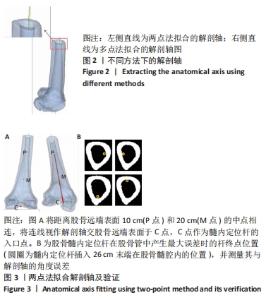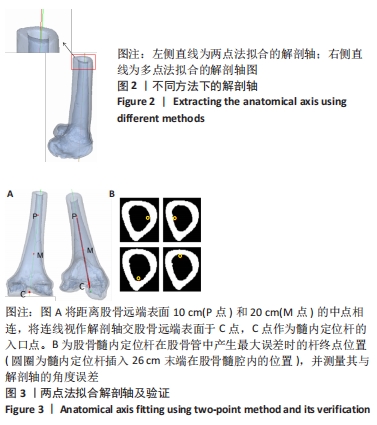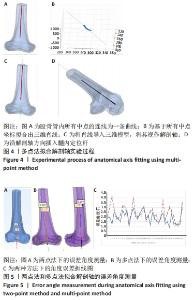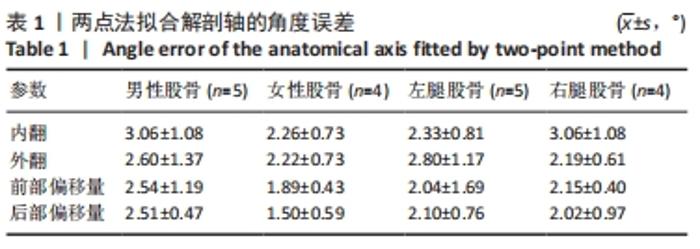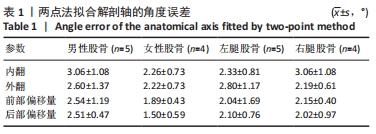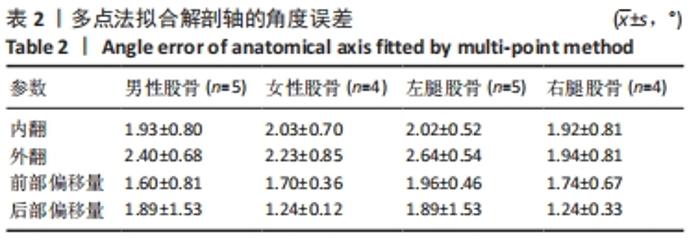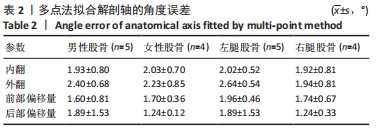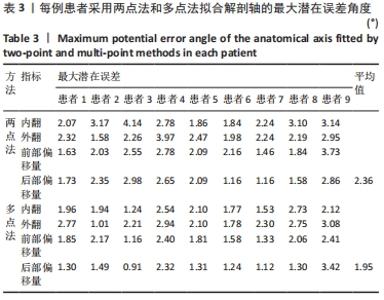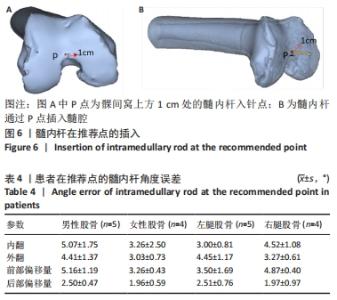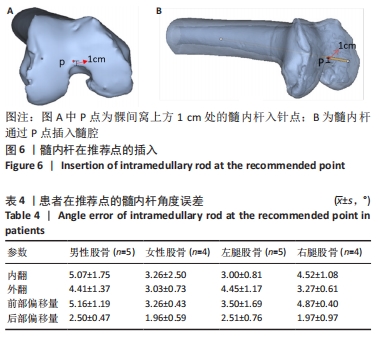[1] 白跃宏.我国骨性关节炎患者超1亿 专家:提倡骨关节保健新理念(2019-5-20)http://zl.39.net/a/190520/7152884.html
[2] 柴旭峰,卫小春.下肢力线的 X 线测量及影响因素[J].中国矫形外科杂志,2007,15(12):915-917.
[3] 尚延春,陈海龙,王战朝.引起全膝表面假体置换手术下肢力线不好的几个原因[J].中医正骨,2007,19(8):45-46.
[4] KUTZNER I, BENDER A, DYMKE J, et al. Mediolateral force distribution at the knee joint shifts across activities and is driven by tibiofemoral alignment. Bone Joint J. 2017;99-B(6):779-787.
[5] THOMPSON SAJ, LIABAUD B, NELLANS KW, et al. Factors Associated with Poor Outcomes Following Unicompartmental Knee Arthroplasty Redefining the “Classic” Indications for Surgery. J Arthroplasty. 2013; 28(9):1561-1564.
[6] BONO OJ, OLCOTT CW, CARANGELO R, et al. Femoral Intramedullary Alignment in Total Knee Arthroplasty: Indications, Results, Pitfalls, Alternatives, and Controversies.J Knee Surg. 2020;33(1):12-14.
[7] MA LY, WEI HY, WAN FY, et al. An Innovative Three-Dimensional Method for Identifying a Proper Femoral Intramedullary Entry Point in Total Knee Arthroplasty.Chin Med J (Engl). 2018;131(21):2531-2536.
[8] XIAO J, WANG C, ZHU L, et al. Improved method for planning intramedullary guiding rod entry point in total knee arthroplasty. Arch Orthop Trauma Surg. 2014;134(5):693-698.
[9] 李芳珍,韩庆辉,唐小莹.计算机辅助技术在创伤骨科临床教学中的创新应用[J].中国高等医学教育,2020(12):86-87.
[10] 刘峰,周文娟,柳忠豪.计算机辅助规划与设计软件在口腔种植外科中的应用[J].临床口腔医学杂志,2021,37(2):124-126.
[11] 房硕博,杨广聚,康艳凤,等.数字化辅助确定再定位牙合垫颌位方法的探索和精度评价[J].北京大学学报(医学版),2021,53(1):76-82.
[12] 顾雨薇,吴轶群.数字化技术在口腔种植外科中的应用[J].精准医学杂志,2020,35(5):458-462.
[13] 王英明. 计算机辅助手术系统在小儿胰腺肿瘤手术中的应用[D].山东:青岛大学,2020.
[14] 周晓强,虞宵,佘远时,等.计算机辅助导航全膝关节置换术的当前概念和进展[J].中华关节外科杂志(电子版),2021,15(1):92-97.
[15] KILGUS DJ, FINERMAN GA, KABO M. Three dimensional imaging techniques for the reconstruction of a complex hip problem. Orthopedics. 1988;11(7):1029-1034.
[16] MURPHY SB, KIJEWSKI PK, MILLIS MB,et al. The planning of orthopaedic reconstructive surgery using computer-aided simulation and design.Comput Med Imaging Graph. 1988;12(1):33-45.
[17] 胡川,陈义,朱卫东,等.整体最小二乘和最小二乘拟合空间直线的比较[J].大地测量与地球动力学,2015,35(4):689-692+701.
[18] 王继刚,周立,蒋廷臣,等.一种简单的加权整体最小二乘直线拟合方法[J].测绘通报,2014(4):33-35.
[19] 韩庆瑶,肖强,乐英.空间离散点最小二乘法分段直线拟合的研究[J].工业仪表与自动化装置,2012(4):107-1096
[20] 李静.基于矩阵奇异值分解的空间直线拟合[J].大学数学,2019, 35(2):5-8.
[21] AMUSAT N, BEAUPRE L, JHANGRI GS, et al. Diabetes that impacts on routine activities predicts slower recovery after total knee arthroplasty: an observational study. J Physiother. 2014;60(4):217-223.
[22] CLEMENT ND, MACDONALD D, BURNETT R, et al. Diabetes does not influence the early outcome of total knee replacement: A prospective study assessing the Oxford knee score, short form 12, and patient satisfaction. Knee. 2013;20(6):437-441.
[23] PÉREZ-PRIETO D, GIL-GONZÁLEZ S, PELFORT X, et al.Influence of Depression on Total Knee Arthroplasty Outcomes. J Arthroplasty. 2014; 29(1):44-47.
[24] BEREND ME, RITTER MA, MEDING JB, et al. Tibial component failure mechanisms in total knee arthroplasty. Clin Orthop Relat Res. 2004; (428):26-34.
|
